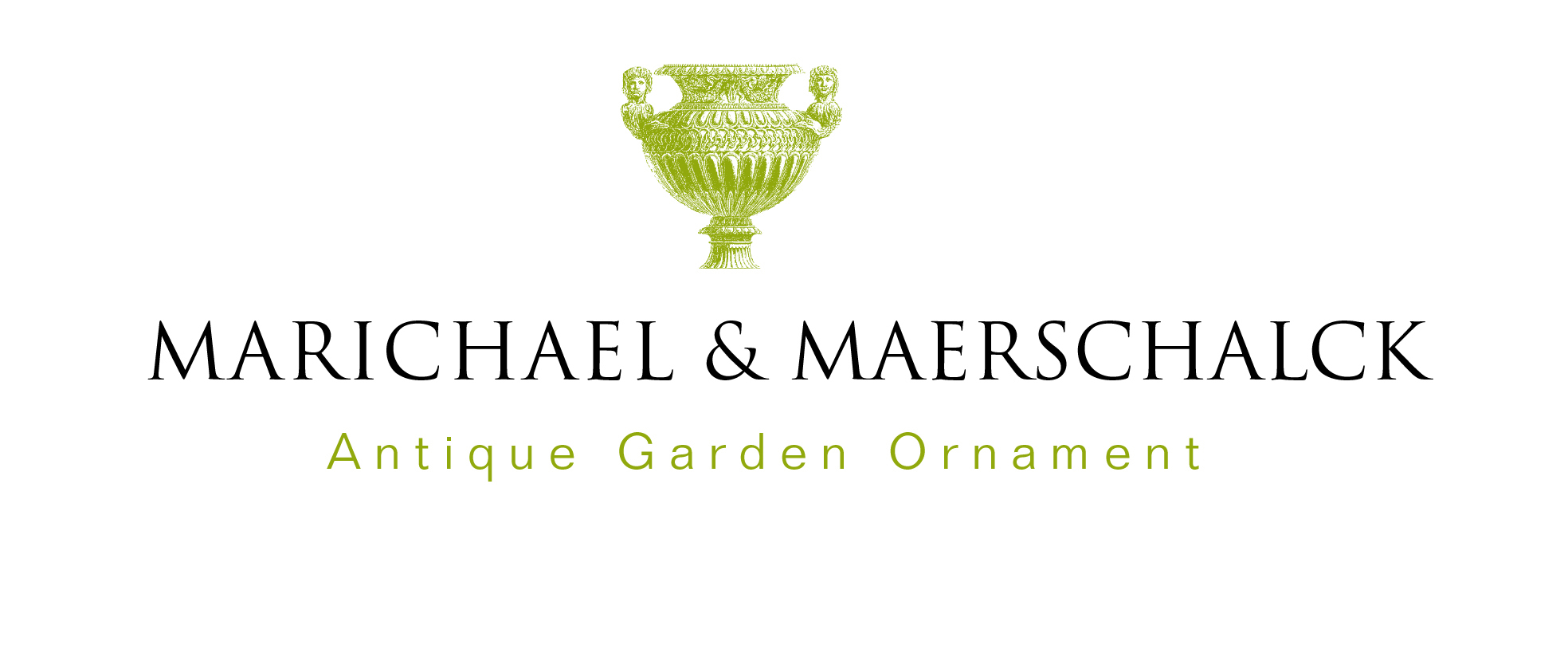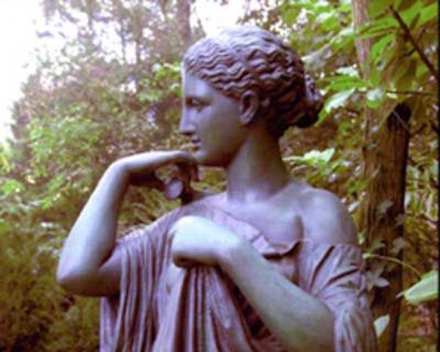- Home
- How to distinguish an authentic item from a replica
How to distinguish an authentic item from a replica
Let's first clearly distinguish the terms 'authentic item' and 'replica' per se. Here is an example: a 19th century cast-iron statue of Diana de Gabies is an authentic antique item from the 19th century. However, this statue was in fact made after the antique Roman original that was excavated in 1792 and is to be seen in the Louvre in Paris since 1820. Hence, this cast-iron statue is at the same time an 'authentic item' and 'replica'. Indeed, it can sometimes be very difficult to distinguish an authentic item from a replica: it is not difficult in a time when scanners exist that can copy statues accurately to within a millimetre. Nevertheless, there are many means to indicate a statue correctly. Catalogues, antique catalogues, reference books. Statues, vases, urns in terracotta or cast iron are often authenticated: in many cases workshop, year and sometimes manufacturer are indicated on the items. The patine and covering often reveal much about the age of certain items. The origin (domains, parks, castles, country houses) of an item can also be a great help to discover the age of it. Various kinds of stone and marble can, for example, be examined for their year of processing at the patrimony of art in Brussels. There are (nuclear) laboratories that, for example, can examine lead and determine whether it has been cast recently or in the period 1880-1920 or between 1700-1800.
Cut or cast?
Distinguishing cut (sculptured) and cast items can be a very hard task, even for experts. There are few written laws that can replace the experiment of putting the two items next to each other and comparing them. However, let's try.
- Cut stone is a more solid, heavier substance than cast stone and has tighter, more rigid fluting and has a rough, irregular surface
- Real stone has veins and in many cases cracks or splits
- In cut stone a deeper relief can be obtained. A mould can only partly equal the depth that a mason's tool puts into a sculpture. The result: cast items show a flatter sculptural detail.
- To cause confusion it sometimes happens that a drill is used with items in artificial stone or that they are a bit 'cut' after being cast to give them a sculptured look
- Cast stone often shows bubbles (air bubbles) on its surface and seams of the mould
- As mentioned above, cut stone has a hard touch, a higher density and is heavier than cast stone. However, Bath stone, for example, a soft limestone from the west of England, is like cast stone powdery and with a soft touch, like Bordeaux limestone, a soft stone from France.
- Both stones are very hard to distinguish from a cast stone
- Some kinds of limestone carry shells or rests of fossils.
Cast iron: 19th century or cast yesterday?
Cast-iron reproductions with an 'antique finishing touch' are a real plague among antique garden ornaments. If a cast-iron item is not marked, it can only be attributed to a manufacturer. As long as no unarguable evidence is produced, as, for example, solid evidence of origin, no manufacturer's name can be appropriated unless the item is authenticated.
- Weight
Old cast-iron items weigh a whole lot more than their modern matches. Cast iron from the beginning of the 19th century will for its part weigh heavier than items that were cast at the end of the 19th century (the earliest manufacture of cast-iron ornaments in Europe started in the late 1820s-1830s)
- Test
Hold a magnet close to the surface of an item. If the magnet is attracted, the item is made of ferrometal, this is iron. If the magnet is not attracted, the statue is nonferrous (made of aluminium, bronze, zinc,. . . ). It is very exceptional that a very thick coat of paint (or several coats above each other) prevents that a magnet is attracted by a ferrometal.
- Bolts and nuts
In the 19th century joints were made by means of iron bolts and square nuts. Hexagonal nuts were used as from 1905 onwards. If all nuts in one statue are hexagonal, it is generally believed that it was made between the mid and late 20th century. Square nuts, however, do not prove that an item is of an earlier period: it is easy to screw square nuts into a new item. On the other hand, it is also possible that after restoration the old nuts of an antique item have been replaced. Only one hexagonal nut between a range of square ones indicates a recent replacement of an old nut. Items that have no visible nuts or bolts indicate joints due to welding or soldering. This can or cannot refer to later manufacture. 19th century weldings exist. Replaced bolts on urns and vases are frequent.
- Thread
There is a widespread misunderstanding that metric thread would indicate new items and Withworth thread antique ones. Metric threads originate in Napoleonic countries like Benelux, France, Germany, Austria and Switzerland. Withworth threads originate in Victorian countries like the United Kingdom and the Commonwealth, the United States, Australia, India,. . It is a misunderstanding that metric threads are most spread, on the contrary: Withworth threads and their equivalents UNC and UNF (in the U. S. ) are most spread worldwide. Metric thread can easily be found on items made as from 1850 onwards
- Scars
Late 20th century items sometimes show grinding spots. These have been caused by grinding seams of moulds. 19th century matrices were made more precise (fitted better into each other) and thus less had to be corrected afterwards. Grinding spots can, however, also be the consequence of restoration : now try to discover if it is about a restoration or a new item. An item can also have serrated edges after being removed from the mould. 19th century items were much better finished with regard to this. Irregular welded repairs on an object indicate that it has been broken. Many coats of paint can indicate that the item is not new. Examine the inside and bottom for bolts and nuts that are covered with different coats of paint or otherwise. Old rust on antique items is very deeply, dark coloured, recent rust is clear orange. Old items without rust cannot be of cast iron.
Antieke Tuinornamenten
Viooltjesdreef 39031 Baarle-aan-de-Leie
info@antieke-tuinornamenten.be+32 (0) 9 282 20 97+32 (0) 475 53 41 63
Opening hours
Bezoek aan de tuin enkel na afspraak.

